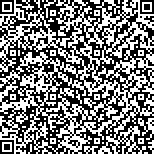| Quote
: |
汪慧,陈延,李平,黄敏,郭珍立.体外培育牛黄治疗缺血性中风中脏腑的临床观察[J].湖南中医药大学学报英文版,2021,41(7):1098-1102.[Click to copy
] |
|
| |
|
|
| This paper
:Browser 1884times Download 491times |
| 体外培育牛黄治疗缺血性中风中脏腑的临床观察 |
| 汪慧,陈延,李平,黄敏,郭珍立 |
| (湖北省中西医结合医院, 湖北 武汉 430015) |
| 摘要: |
| 目的 观察体外培育牛黄治疗缺血性中风中脏腑(痰热内闭证)患者的临床疗效。方法 选取湖北省中西医结合医院2017年2月至2020年2月新发缺血性中风中脏腑(痰热内闭证)患者108例,分为治疗组和对照组,每组54例。所有患者均给予西医常规治疗,治疗组患者另外加服体外培育牛黄0.3 g/d,温水化开后鼻饲,疗程为1周。观察治疗前及治疗后1周、4周及3个月两组患者格拉斯哥昏迷指数(GCS)、美国国立卫生研究院卒中量表(NIHSS)、改良Rankin量表(mRS)评分的变化情况;检测治疗前及治后1周超敏C反应蛋白(Hs-CRP)、神经元特异性烯醇化酶(NSE)、S-100β蛋白水平的变化情况。结果 治疗后1周,治疗组和对照组GCS评分、NIHSS评分、mRS评分比较差异无统计学意义(P>0.05),治疗后4周及3个月,治疗组GCS评分高于对照组,NIHSS评分、mRS评分低于对照组,差异均有统计学意义(P<0.05)。治疗后1周,两组患者血清Hs-CRP、NSE、S-100β蛋白水平均较治疗前下降,且治疗组低于对照组,差异有统计学意义(P<0.05)。结论 体外培育牛黄治疗缺血性中风中脏腑(痰热内闭证)可有效降低患者的炎性反应、减轻神经损伤、改善中远期预后,有一定的临床应用价值。 |
| 关键词: 中风 中脏腑 痰热内闭证 体外培育牛黄 格拉斯哥昏迷指数 美国国立卫生研究院卒中量表 改良Rankin量表 |
| DOI:10.3969/j.issn.1674-070X.2021.07.022 |
| Received:December 17, 2020 |
| 基金项目:重大疑难疾病中西医临床协作试点项目(国中医药办医政发[2018]3号-39)。 |
|
| Clinical Observation of In-vitro-cultured Calculus Bovis on Ischemic Apoplexy Involving Zang and Fu-viscera |
| WANG Hui,CHEN Yan,LI Ping,HUANG Min,GUO Zhenli |
| (Hubei Provincial Hospital of Integrated Chinese and Western Medicine, Wuhan, Hubei 430015, China) |
| Abstract: |
| Objective To observate the clinical effect of in-vitro-cultured calculus bovis on ischemic apoplexy involving Zang and Fu-viscera (syndrome of phlegm heat blocking internally). Methods Patients with first-ever ischemic apoplexy involving Zang and Fu-viscera (syndrome of phlegm heat blocking internally) who hospitalized in Hubei Provincial Hospital of Integrated Chinese and Western Medicine from February 2017 to February 2020 were selected. The patients were separated into treatment group and control group randomly, 54 patients in each group. All the patients were given the routine treatment of western medicine. The treatment group were treated with in-vitro-cultured calculus bovis 0.3 g everyday extraly, nasal feeded after warm hydration. The course of treatment was one week. The Glasgow coma scale (GCS), National Institutes of Health stroke scale (NIHSS) and improved Rankin scale (mRS) were calculated before treatment and after 1 week, 4 weeks, 3 months of treatment; the levels of hypersensitive C-reactive protein (Hs-CRP), neuron-specific enolase (NSE) and S-100β protein were calculated before treatment and after 1 week of treatment. Results After 1 week of treatment, the scores of GCS, NIHSS and mRS were compared between the two groups, there was no significant difference between the treatment group and the control group (P<0.05). After 4 weeks and 3 months of treatment, the scores of GCS of the treatment group was higher than the control group, the scores of NIHSS and mRS were lower than the control group, and there was a significant difference between the two groups (P<0.05). After 1 week of treatment, the levels of Hs-CRP, NSE and S-100β protein were lower than before treatment, and treatment group was lower than the control group, there was a significant difference between the two groups (P<0.05). Conclusion The application of in-vitro-cultured calculus bovis on the patients of ischemic apoplexy involving Zang and Fu-viscera (syndrome of phlegm heat blocking internally) could reduce the inflammatory response and neurologic impairment, improve the medium term and forward prognosis, it has a certain value of clinical applications. |
| Key words: apoplexy apoplexy involving Zang and Fu-viscera syndrome of phlegm heat blocking internally in-vitro-cultured calculus bovis Glasgow coma scale National Institutes of Health stroke scale improved Rankin scale |
|

二维码(扫一下试试看!) |
|
|
|
|


